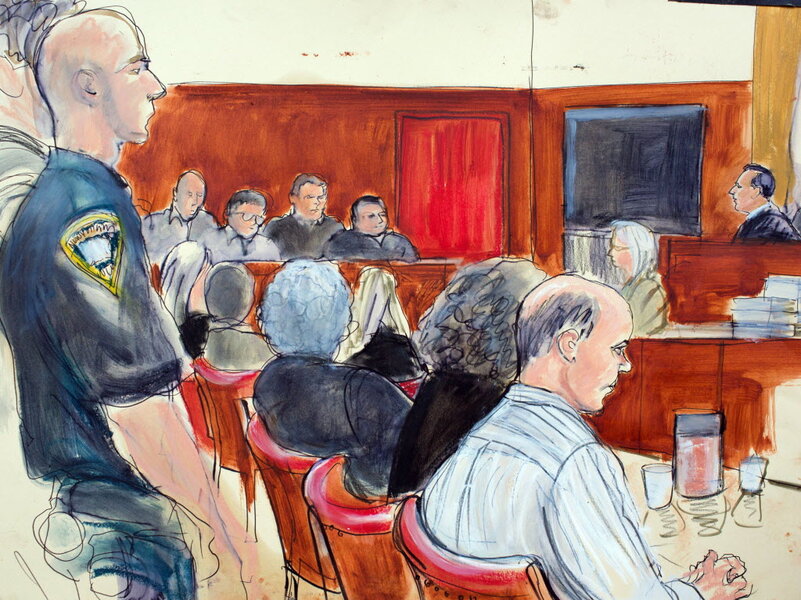Etan Patz trial: Why wasn't Pedro Hernandez found guilty of murder?
Loading...
On Friday, a judge declared a mistrial in the murder case against Pedro Hernandez, who confessed to killing Etan Patz – a 6-year-old boy who went missing in 1979.
The mistrial was declared because the jury could not come to a unanimous verdict. But New York prosecutors immediately moved for a second trial of Hernandez on the same murder charge.
When Patz disappeared from New York City in 1979, his family's grief sparked a rise in awareness of missing and abducted children. Patz was one of the first missing children to be featured on milk cartons. However, it took more than 10 years of investigations for a suspect to emerge. The first suspect was Jose Antonio Ramos, a friend of a babysitter who worked for the Patz family. At that time, Ramos was already in prison for a previous conviction of child molestation, but police failed to find sufficient evidence to charge him for Patz’s disappearance. Ramos denied any involvement.
Then in 2012, Pedro Hernandez confessed to the murder and was arrested. Hernandez, who worked in a Bodega near the Patz family home in SoHo, claimed he choked the boy in the basement of the shop, put the body in a bag, and dumped it in an ally two blocks away. Despite the confession, the prosecution found little evidence to back up his confession, since Patz’s body has never been found. The defense argued that the confession was false and was a result of mental illness and doctors testified that he had trouble telling reality from illusion.
"Pedro Hernandez is the only witness against himself,” defense lawyer Harvey Fishbien said during closing arguments. “The stories he told over the years, including in 2012, and since, are the only evidence. Yet he is inconsistent and unreliable.''
During 18 days of deliberations, the jury emerged three times with a deadlock before the judge declared a mistrial. While 11 members of the jury were convinced by the the testimonies of Hernandez’s ex-wife, his friend, and several members of his church prayer circle – who said Hernandez had alluded to harming a boy from New York – one juror was not.
"Ultimately, I couldn't find enough evidence that wasn't circumstantial to convict. I couldn't get there," said the juror, Adam Sirois, a healthcare consultant. Mr. Sirois thought that the metal illness plea had not been explored fully.
While the Double Jeopardy Clause of the 5th Amendment typically prevents a person from being tried more than once for the same crime, declaring a mistrial allows for a retrial if the there was “manifest necessity” to stop the court proceedings.
“‘Manifest necessity’ characterizes the burden the prosecutor must shoulder in justifying retrial,” according to Cornell University’s annotated constitution. “But ‘necessity’ cannot be interpreted literally; it means rather a ‘high degree’ of necessity, and some instances, such as hung juries, easily meet that standard.”
Hernandez will remain in jail while he awaits a second trial. He has a June 10 court date for a status update.
"We are frustrated and very disappointed the jury has been unable to make a decision. The long ordeal is not over," said Etan’s father, Stanley Patz. "I am so convinced Pedro Hernandez kidnapped and killed my son. ... His story is simple, and it makes sense."
Patz added that the family already has closure.
Some see this case as an example of judicial perseverance, given that the case has been open for 36 years, and the difficulty of pressing charges when physical evidence is lacking and there are no witnesses to the crime.
"The challenges in this case were exacerbated by the passage of time, but they should not, and did not, deter us," District Attorney Cyrus Vance said.








